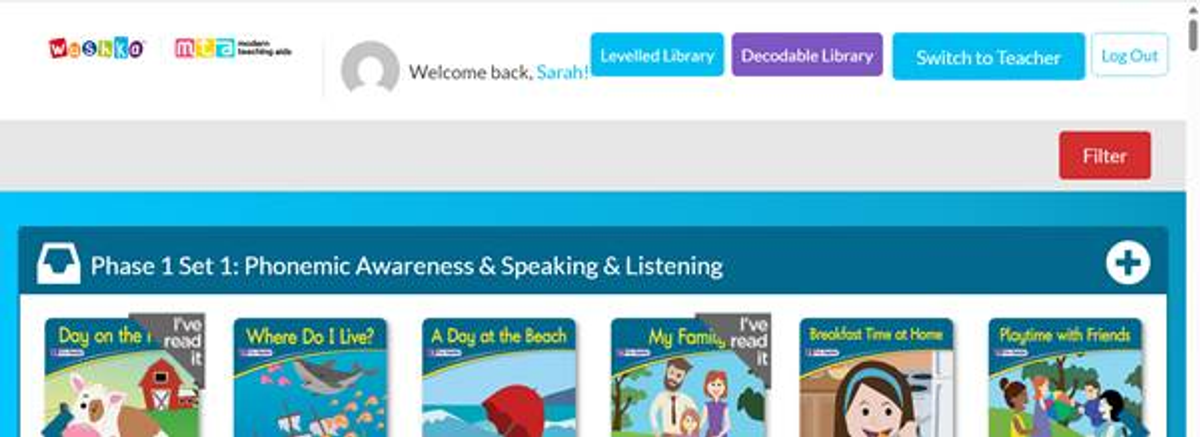Literacy

Decodable Readers vs Predictable Readers
Schools use both decodable texts and predictable or repetitive texts for teaching students to read.
Predictable texts are early readers that contain repetitive words and sentences. Predictable texts have their foundations in the three cueing systems model of reading. (Does it make sense? Does it sound right? Does it look right?)
Predictable texts have been designed so that beginning readers have to rely on contextual clues to read many of the words that are on the page. These readers contain more complex words with grapheme–phoneme correspondences that the students may have not been taught.
Decodable texts are specifically written for beginning readers as they are developing their blending and segmenting skills and their knowledge of the alphabetic code. Decodable texts support students as they practise by using a continuous meaningful text.
Decodable texts contain a very large percentage of words that incorporate the letter-sound relationships that students have been taught. Decodable texts increase in complexity as the student learns more of the phonetic code.
Solway has recently purchased a number of new decodables books to be used as take home readers for students in Prep, 1 and 2 from the Little Learners Love Literacy ‘Pip and Tim’ series. This is in addition to the digital decodable and predictable library in Wushka for students in 1 and 2. https://wushka.com.au/
Students in Prep to 6 have also got access to the Reading Eggs and Reading Eggspress for take home books. https://readingeggs.com.au/
English Fun fact #206 - Rebracketing
Rebracketing
Rebracketing (also known as resegmentation or metanalysis) is a process in historical linguistics where a word originally derived from one set of morphemes is broken down or bracketed into a different set. For example, hamburger, originally from Hamburg+er, has been rebracketed into ham+burger, and burger was later reused as a productive morpheme in coinages such as cheeseburger.
Consider the word helicopter. To most English speakers’ thinking, the two parts of the word are heli and copter. This is not correct. Coined in 1861, the etymology of the word originates from the Greek helico (spiral) and pter (with wings, as in pterodactyl). Nonetheless, we now have derivatives of this rebracketing, like helipad, heliport, and helidome. Copter, which wasn’t a word, suffix, or even slang before helicopter, gives us new combinations like gyrocopter, jetcopter, and quadcopter.
National Simultaneous Storytime
On Wednesday 21 May, Solway participated in the National Simultaneous Storytime led by the Australia Library and Information Association alongside over 2 million other readers in more than 20,000 locations. Solway students met with their buddies or teams to view this year’s book ‘The Truck Cat’ written by Deborah Frenkel and illustrated by Danny Snell. Thank you to Louise Pearson for organising this much enjoyed event each year.
Sarah Watkins
Acting Assistant Principal/Literacy Specialist

